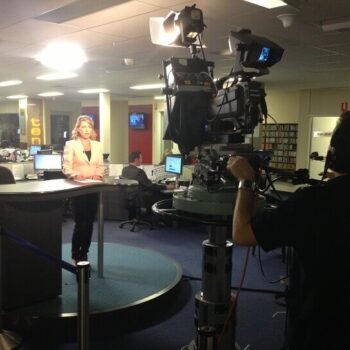Pitching – are you making these common mistakes?
With Public Relations professionals outnumbering journalists in the Australian media industry, it’s never been harder to pitch a story. But successful pitching, which leads to stories being published, is exactly how PR helps a business, by raising brand awareness.
For almost a decade, the industry has seen an increasing number of reporters shifting from journalism to PR, along with aspiring young professionals looking to make their big break in the communications industry.

Our Managing Director Leisa Goddard and Communications Director Clare Christensen reveal exactly what firms are doing wrong, and how in public relations a new business pitch simply isn’t enough.
Common mistakes made by PR agencies
With almost 40 years of experience between them, Leisa and Clare know what makes a story. And because of their time as journalists, they’ve also seen first-hand the common mistakes made by PR professionals when they’re trying to pitch a story to a newsroom or journalist.
One size fits all approach
Firstly, all media releases need to be tailored to the type of publication the release is being sent to. This means finding a newsworthy angle. A news angle used to target a business publication will not work for a lifestyle magazine.
Too often PR agencies send one generic release to different types of outlets. It automatically alienates you and your story from the journalist who receives it, if there’s no relevant angle to them.
Buried angles
“Journalists are strapped for time and need to get a grasp of what your story is at a glance,” Leisa said.
“They’ll look at three things in your pitch – the sender, the subject title, and the first sentence. As a news Chief of Staff, too often I have received pitches where the news angle is hidden in the last few sentences, or I’ve been sent a media release without any facts or newsworthy angle at all.”
Wrong timing
There are also mistakes even experienced PR professionals make because they’re not aware of how a newsroom works.
“In radio, it was our biggest bugbear when a PR professional would call on the hour,” Clare said.
“That’s exactly the time a radio journo needs to head into the booth to read the news live to air. Similarly, don’t call a TV newsroom or radio program when they’re about to be on air.”
Location errors
PR agencies need to consider where they’re sending a release.
“In Brisbane newsrooms, we’d be sent Sydney stories,” Clare said.
“It comes across as lazy and unprofessional, and apart from that, that story will never be picked up.”
Lack of filming opportunities
As a TV journalist, I would often turn up to stories that promised to be good for television, but the spokesperson wouldn’t be prepared, they’d be positioned in front of a white wall, and there’d be no overlay to film,” Leisa said.
“Organise it so there’s something to film on the day or if there aren’t any filming opportunities or vision you can supply, consider removing TV from your media pitch list.”
What you need to do
The first step to increasing your chances of having a story accepted is tailoring your pitch.
“No journalist wants a story every other publication is receiving, they want an exclusive, or at least something specific to their target audience,” Leisa said.
“With this being said, this doesn’t mean there isn’t potential for you to offer the exclusive and still have other networks or publications run the story afterwards.”
An example is National Transport Insurance (NTI), a client of Adoni Media, where an exclusive story was offered to the Today Show on truck safety coming into Christmas.
Following the story being aired, it was also covered 8 times on radio, 18 times in online news, and 29 times on television channels including 7, 9 and 10 later that day.
Adoni Media had arranged for four spokespeople to be available, had coordinated two trucks to form a backdrop to the media call, and provided newsrooms with dashcam footage and new statistics.
“The story Adoni Media did with NTI shows the importance of identifying a newsworthy angle, along with having an available spokesperson with an exciting background, and good vision,” Leisa said.
To help raise awareness for your business through PR, contact us.


